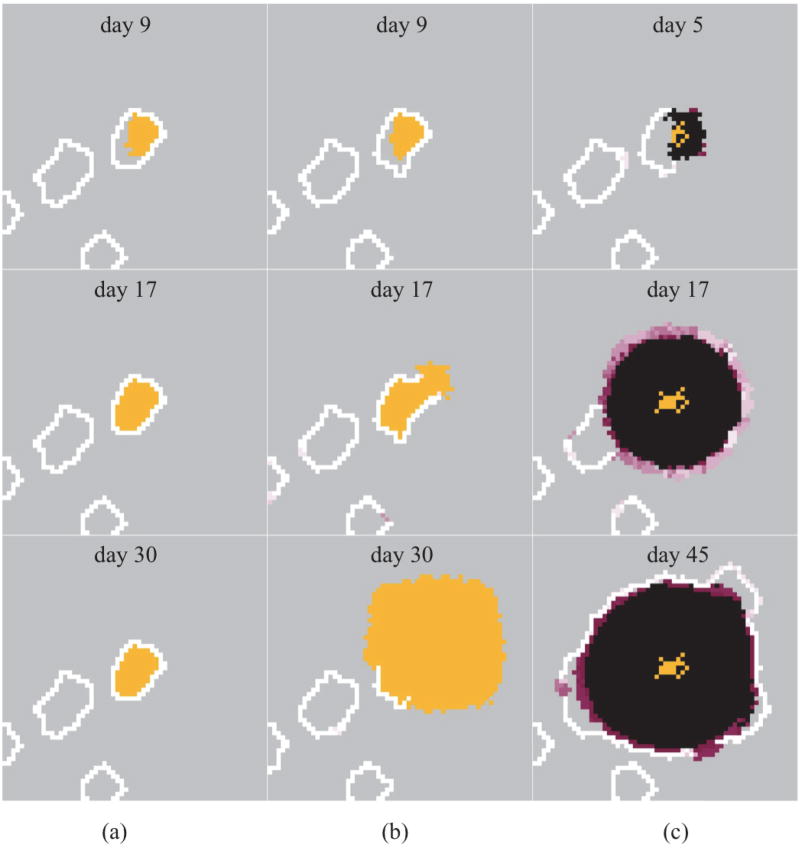Fig. 8.
A mutation is introduced in a pre-existing homeostatic tissue with fully differentiated ducts. Three frames of each simulation are shown, at indicated days from the mutation time. The mutant cell and its progeny are tagged in yellow. The homeostatic tissue is characterized by c̄ = 1, TP = 0.06, TM = 0.18. Other parameter values are the same as in the previous simulations. (a) The mutated cell is characterized by TM = ∞ and c̄ = 0, making the cell completely irresponsive to the environmental cues. The mutation is introduced in a non-cancerous tissue with stable ducts. (b) The same mutation is introduced in a well differentiated cancerous tissue, characterized by turnover. The mutant’s progeny breaches the duct. (c) A different type of mutation is introduced in a well differentiated cancerous tissue. The mutated cell actively modifies the environment through extra production of DS, causing a bystander effect and invasive growth.

